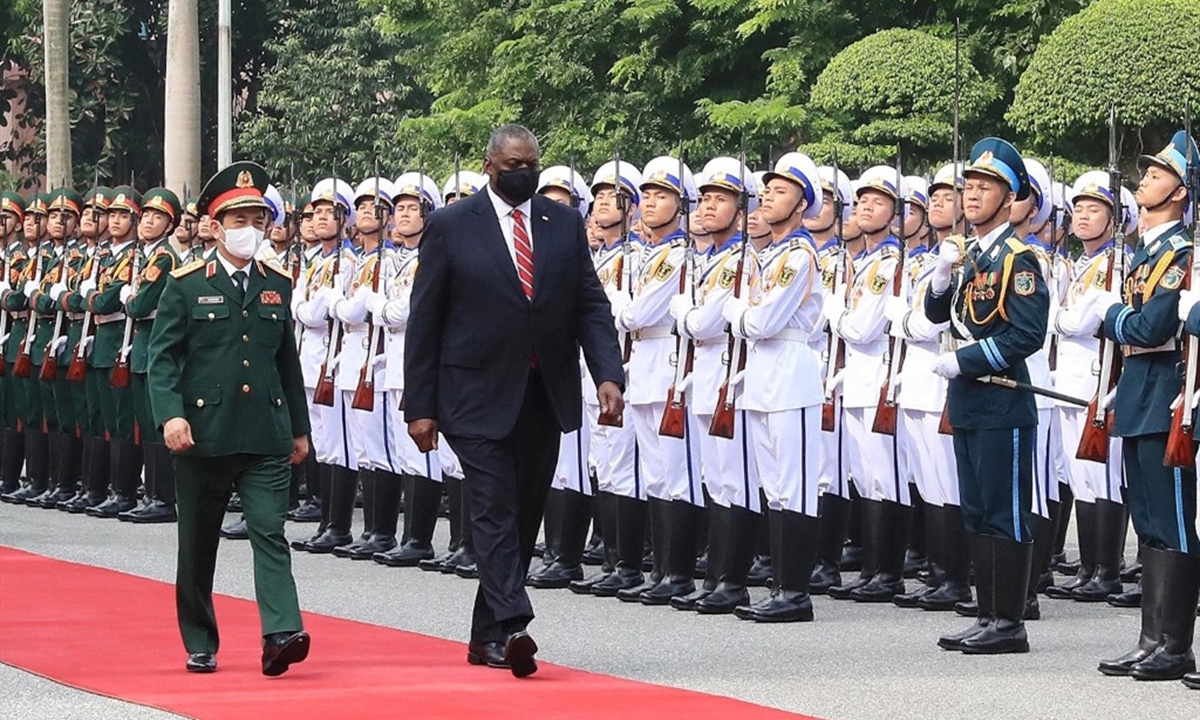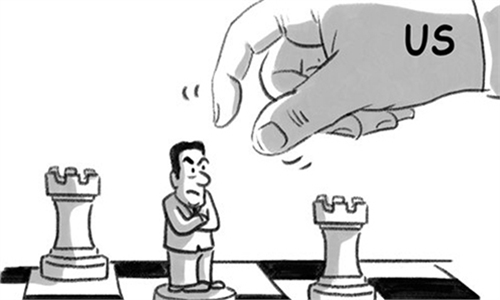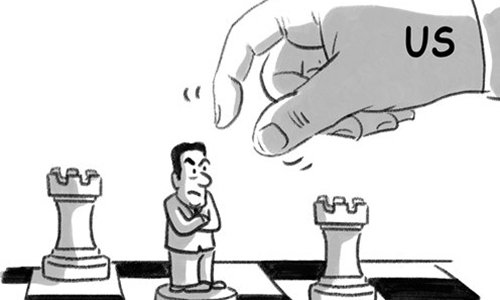
US Secretary of Defense Lloyd Austin paid a visit to Vietnam. Photo: AFP
After US Deputy Secretary of State Wendy Sherman paid a visit to Indonesia, Cambodia and Thailand in late May and June, Southeast Asia is now witnessing a "comeback" of the US. US Secretary of State Antony Blinken attended the Special ASEAN-US Foreign Ministers' Meeting via video on July 14. Then from July 26, US Defense Secretary Lloyd Austin conducted a visit to Singapore, Vietnam, and the Philippines.It is expected that as ASEAN's 2021 agenda is further pushed forward, senior officials from the Biden administration will have more opportunities to visit Southeast Asia, or attend ASEAN-related multilateral conferences via video. In other words, the Biden administration will accelerate its speed to "return" to the region. This is happening against the backdrop of general regional disappointment with the lack of the US' willingness to engage with the region.
For a long time, Southeast Asia adopted more balanced foreign policies among major powers, notably the one practiced by Singapore. The core of such a strategy is to keep equidistance with China and the US while remaining open to regional affairs. Meanwhile, China and the US are presently balancing each other. The outcome is leading to a dynamic balance in the region.
In recent years, in face of the ever intensifying major power competition and rivalry between China and the US, Southeast Asian countries have avoided picking a side and adopted a hedging strategy. From the regional perspective of ASEAN, it not only hopes major powers represented by China and the US have a clear and positive Southeast Asia policy, but also wants to highlight its "central" position and its importance in international affairs.
Take the Indo-Pacific for example. When countries like the US, Japan, India and Australia all envision their plans with regard to the Indo-Pacific, ASEAN released its own outlook. It elaborated its own views on cooperation and principles in the region. They have shown more strategic initiatives and independence, which is in line with the theme of unity, tenacity and adaptability that ASEAN has been stressing.
In this sense, Sherman, Blinken and Austin's comments during their visits to Southeast Asia failed to meet the above-mentioned strategic needs of Southeast Asian countries. Sherman commented on her visit to Thailand that America wants to make sure that Thailand has a balanced relationship. Blinken proposed for "a free and open Mekong region" during his meeting with ASEAN Foreign Ministers and the ASEAN Secretary General. Austin discussed need for Indo-Pacific partnerships in the future in Singapore, and declared the political support of the US to the region's coastal states. These remarks highlight the importance of Southeast Asia to the Biden administration's foreign strategy in two ways: It is the core region of the implementation of the "Indo-Pacific" strategy, and also is the frontline of US' strategic competition with China.
In conclusion, it serves the foreign strategy of the Biden administration at the geostrategic level.
In addition, from the perspective of geopolitics, Southeast Asia, as the gathering place of emerging countries, is full of hope. But it has also been troubled by the strategic competition between great powers represented by China and the US and the pressure of "taking sides." Although Sherman, Blinken and Austin repeatedly stressed that the US is not asking the countries in the region to choose one country over another, it will be difficult for Southeast Asian countries to ease the pressure. They will continue to feel the distress and concern of taking sides in both practical and theoretical terms. This indicates that the visit of senior officials such as Sherman did not ease the concerns of Southeast Asian countries. It instead continued to strengthen the pressure of Southeast Asian countries to take sides.
The logic of the Biden administration's "return" to Southeast Asia indicates the possible policy statement of US vice president Kamala Harris, and even higher official, when they visit Southeast Asia. It also means that the US' return will not meet the expectations of ASEAN countries at the external strategic level, let alone make Southeast Asian countries satisfied. For ASEAN countries, although they have experience in handling major-country relations, they need to enhance resilience, adaptability, patience and wisdom in coping with the strategic competition between major powers represented by China and the US.
The author is a senior research fellow of the Charhar Institute in China and the Deputy Dean of the ASEAN College of Guangxi University for Nationalities. opinion@globaltimes.com.cn


